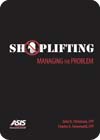Solutions: Force and Pursuit

What should chain store CEOs and merchants instruct security with respect to the use of force in detaining and apprehending suspects?
Obviously, the first consideration should be to follow the law of the jurisdiction concerned. Competent legal counsel should be sought in this regard. Generally, the employee or security officer is permitted to use only non-deadly force in dealing with shoplifters. The amount of non-deadly force permitted is strictly limited to only that amount of force required to just overcome the force used by the shoplifter for the protection of the person making the detention. Some jurisdictions permit the use of non-deadly force to prevent the escape of the shoplifter or the loss of the stolen merchandise (evidence); but this extension of the permissible use of force is not universal. The use of force is one of the most litigated aspects of the shoplifter detention and apprehension process.
The policy on use of force decided upon will not only depend on applicable laws but also on company policy in this regard.
The issue of the use of force is clearly one that demonstrates the necessity of choosing the right personnel for making shoplifting apprehensions. The good judgment of the security in situations is critical, and mature and level-headed decisions are essential. While the use of excessive force cannot be tolerated, neither can management, after giving an employee the responsibility of protecting their assets and the authority to detain shoplifters, deny that employee the right to adequately and legally defend himself if attacked while performing his assigned duties.
No touch policies
Some companies have a “no touching” or “no touch” policy; these companies prefer that the suspect be allowed to escape rather than risk injury to any concerned party. It’s a store’s right to implement such rules but such policies tend to encourage rather than deter shoplifting. This policy severely restricts the ability of security to make apprehensions in some cases. The “no touch” restriction may be likened to asking a police motorcycle officer to cite traffic violators but restrict his speed to 20 MPH when doing so. This policy adversely affects the ability of security to make apprehensions.The issue of the security employee’s right to use force for self-defense is clear. More often than not, however, the issue of force doesn’t focus on defensive force but rather on offensive force used by employees to overcome the shoplifter’s resistance or efforts to escape detention. If in a struggle the shoplifter’s finger is broken, the criminal act of theft may be overshadowed by the injury, prompting a claim of excessive force.
The degree to which force, if any, is used depends upon the company’s policy on this issue. Those employers who permit the use of force (and legally it must, with only extremely rare exceptions, be restricted to non-deadly force) generally permit only a “holding force” described as that which is minimally required to return the suspect to the store.
Those companies permitting any use of force are well advised to assure their policy is written, understood by all loss prevention personnel, and that the required training in the use of force is carefully documented. The use of outside consultants or training specialists in the proper application of force in the loss prevention arena may prove a good investment. Many such training specialists include so-called “verbal judo” (the effective use of words and body language to defuse potentially violent situations) as well as training in the use of force continuum.
What about pursuits
The issue of pursuits is a contentious and highly debated subject. To pursue or not to pursue--that is the question. How should a company determine the answer to this question? Will the answer to this question depend upon whether the shoplifter has dropped the stolen merchandise or still has it? How far do you want your employees to pursue a fleeing shoplifter? While some of these questions go beyond the issue of force, they require a decision on your part and must be incorporated into your policies and procedures. A limited and predefined pursuit policy is both necessary and justified.With regards to pursuing a shoplifter, if the shoplifter or employee knocks down a customer or passer-by, the resultant injury may drive a civil action against the store. Court cases have decided the issue of store liability on both sides of this question. Some stores dictate a “no chase” policy under any circumstances (an extension of the “no touch” rule). Others allow a limited and predefined chase only to the perimeter of a parking lot or other prescribed location. As with all pursuits, as mentioned earlier, the pursuit should only be undertaken if in accordance with company policy and can be done without placing security or customers in harms way.
Whenever company policy allows for pursuits, the extent of such chases should never be allowed to extend beyond company property or onto public streets. In the case of mall stores, we suggest that pursuits should never go beyond the borders of the mall parking lot. The use of vehicles to chase suspects should be strictly prohibited. Chase policies should explicitly require termination of the pursuit whenever the pursuit presents safety issues.
Looking for a reprint of this article?
From high-res PDFs to custom plaques, order your copy today!






